Other health problems of Dogs
223 articles
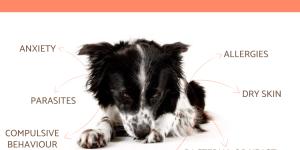
It is not uncommon for a dog to occasionally chew or lick their paws, as this is a normal part of their self-grooming process. You may notice your dog chewing or licking their paws after being outside, especially if they have been in dirty or sandy areas. However, if your dog is compulsively and constantly...

Dogs lead with their nose. The olfactory sense of dogs is one of the most acute in the animal kingdom. It is a power which is harnessed by human guardians in various professional capacities, but for the dog it is the key to their wellbeing. It allows them to smell food for palatability, procure vital information...

To better understand leukopenia in dogs, we need to understand the makeup of a dog's blood. Blood is part liquid, part cellular. The liquid part is known as plasma and contains fibrinogen and serum. The cellular part is made up of erythrocytes (red blood cells), leukocytes (white blood cells) and thrombocytes...

In lymphocytopenia, the number of lymphocytes (a type of white blood cell) in the blood is abnormally low. Lymphocytes are a type of white blood cell that perform various tasks in the immune system, including protection against bacteria, viruses, fungi, and parasites. There are many conditions that reduce...

While cats are known for their curiosity, dogs are no less interested in exploring their environment. Unfortunately, this can involve ingesting substances which can cause them considerable harm. While guardians should do all they can to avoid exposure to pesticides such as rat poison, it is possible they...

In the wild, a dog needs to maintain their own nails. They do so through various methods such as scratching on hard surfaces. When they have a bacterial infection in their claws, it can be difficult for them to treat and can become very serious. This is because the infection can abscess or even poison...

Diabetes mellitus is one of the most frequent chronic diseases diagnosed in small animal veterinary clinics. For some dog guardians, it is surprising since dogs do not generally eat a lot of sugar in their diet, but this is due to a mischaracterization of the disease. Despite such prevalence, especially in older...

We can find lumps in dogs in any area of the body and with different characteristics. Most lumps and bumps are benign (non-cancerous), but some of them can be malignant (cancerous). The older your dog is, the more likely they are to get malignant lumps. The good news is that early detection and treatment...

Consultations related to anorexia in dogs are among the most common reasons for visits to the veterinarian. The fact that a dog stops eating or eats less than usual is a cause of concern for its owners. Most cases of anorexia in dogs are due to an underlying medical condition. We can remedy this by accurately...
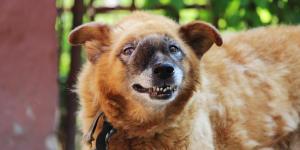
There are various types of tumor which can affect dogs. Adenocarcinomas are malignant tumors of epithelial origin that can affect a wide variety of internal organs. They are especially common in older and middle-aged dogs. The symptomatology associated with this type of neoplasm is usually non-specific,...
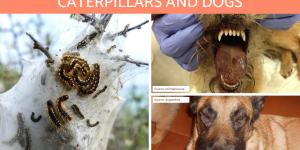
While most caterpillars as harmless creatures which could do no harm to an animal the size of a dog, there are a few important exceptions. The pine processionary caterpillar (Thaumetopoea pityocampa) is one of them. Simple contact with one of these spiny caterpillars can require immediate emergency veterinary...

Inhalation of toxic gases and vapors is a relatively common cause of poisoning in dogs. This is because of the prevalence of cleaning products, lubricants and other chemicals we keep at home. Whether the dog has accessed them out of their own curiosity or we have accidentally exposed them to a harsh chemical,...
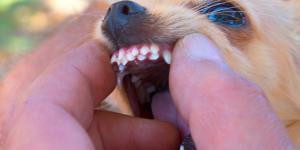
As our puppies grow up, we need to ensure their development is progressing well. Some signs this is the case can be observed more easily than others. As with any part of their body, a dog's teeth change as they mature from a puppy to adulthood. While it can be a little painful for a dog's deciduous teeth...
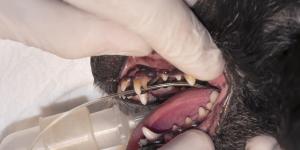
You may not be aware that dogs have baby teeth. When your puppy matures, their dentition changes in a similar way to human beings. A dog's baby teeth, also known as milk teeth, primary teeth or deciduous teeth, are smaller and sharper than their adult teeth. They should naturally fall out of their own accord...
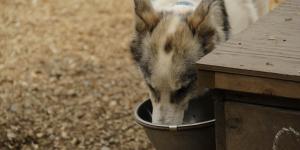
Although it depends on many individual factors, a dog should drink around 100 ml of water per kilogram of their weight per day. We can sometimes see an increase in a dog's water consumption for various reasons. This is known as polydipsia in veterinary medicine. When a dog exhibits any physical or behavioral...

Otitis is a relatively common problem in veterinary clinical practice. A general term for many types of ear inflammation, otitis manifests in itching, redness, excess wax build up and ear pain in the dog. This both causes discomfort in the dog, but also worry in the guardian. Despite its prevalence, otitis...
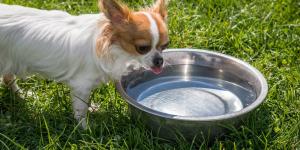
Any physical symptoms or behavioral changes in our dogs which may indicate illness need to be understood in context of their situation. Various pathologies and health conditions can cause either a lack of appetite (anorexia) or an increased water consumption (polydipsia) in dogs. When the two clinical signs...
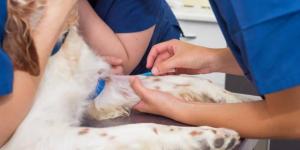
We think of the word cholesterol as synonymous with something bad, but it actually refers to essential fats which animals need to develop and maintain their body. It is a natural lipid which is present in almost all cells and it is used in digestion, vitamin D synthesis and hormone production. Only when...

Dogs are curious animals by nature, often accidentally eating or sniffing things that may be poisonous to them and that may seem completely harmless to you. This includes various types of plants, both indoors and outdoors, that can cause poisoning in dogs. While some plants may only cause digestive...
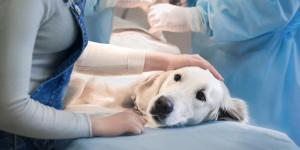
Tumors are one of the many pathologies that can affect the liver of dogs. Although primary liver tumors are not common in dogs, the liver is one of the organs where malignant tumors arising in other parts of the body most often metastasize. Liver cancer can be a silent killer in dogs because obvious...

Cramps can be difficult to detect in a dog's muscles. This is especially the case if the dog has long hair. In cases were the cramping is continuous, it is possible to see the dog's muscles twitch under the skin. Often, the dog experiences painful muscles spasms without their guardians being able to see. Not...
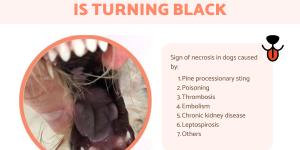
The tongue is an organ made up of various muscles which belongs to the digestive system. Different animal species will use their tongues in different ways and dog have their own specific uses. For example, the tongue not only allows them to intake water and food, it is an essential element in regulating...

Control of food intake is possible thanks to the interaction of gastrointestinal, nervous, and environmental factors that work together to maintain energy levels and body weight in animals. However, when an imbalance of these control mechanisms occurs, changes in food intake occur, such as polyphagia.
The...
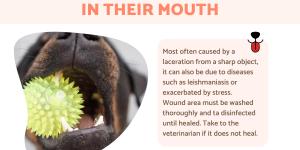
Whether on their tongue, cheek or any part of the mouth, it is not always easy to see when our dog has oral health problems. Not only are cuts, lacerations, ulcers and sores on the inside of their mouth difficult to see, but dogs are particularly good at hiding signs of pain. If your dog has a cut in their...

The synovial bursa is a structure around a joint which provides cushioning against trauma and general wear and tear. Since bones can cause friction when rubbing against each other, the synovial bursa helps to prevent damage from being worn down. When this structure is inflamed, it leads to a condition known...

Swelling of your dog's paws is a sign that your pet may be suffering from an underlying condition that requires medical attention. There are many possible causes of swollen paws related to changes in various organs, devices or systems. Analyzing how the swelling occurs and develops will help diagnose...
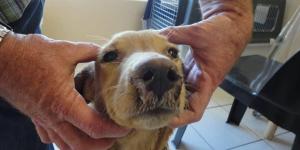
Any changes to your dog's well-being are a cause for concern. If we see certain symptoms, they can make it obvious something is seriously wrong. However, some of the deadliest diseases in dogs are slow to progress. For this reason, we need to be observant to even small changes and remember to take our dog...
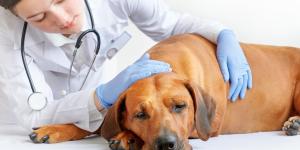
Cholestasis is a condition that can affect the biliary system of dogs. It occurs when bile is unable to flow from the liver, whether due to a blockage or suppression of bile flow. It results in the accumulation of bile in the liver since it is unable to leave. Determining the specific cause of cholestasis...

There are many reasons why a dog's gait will change. It should not be a surprise that older dogs start to lose mobility. As a dog ages, the wear and tear on their bones and joints will take its toll. However, when a dog loses mobility in their back legs all of a sudden, especially if they are not a...

Cirrhosis is advanced fibrosis of the liver characterized by loss of normal hepatic structure. This means the tissue of the liver itself becomes irreparably changed. It most often occurs as a result of chronic damage to the liver, leading to the failure of the regeneration mechanism of this organ. We may...
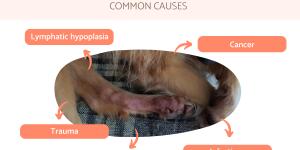
Whether it is their front or back limb, seeing a dog's leg swollen with fluid is a symptom which cannot be ignored. The dog's circulatory system is made up of the blood and lymphatic systems which interrelate to carry out various functions. When one part of the body is affected, its connectivity means symptoms...

Depending on their weight, length of fur and other factors, we may not initially notice a dog's lymph nodes are swollen. This symptom may only be observed when we pet them around the neck or if we see them struggle with a collar. Often this happens after the inflammation has become extensive. Before we...

Dogs are known for their voracious appetites, but not all dogs have the same metabolism. Whether a dog loses or gains weight easily will depend on many factors, genetic inheritance due to breed being only one of them. However, when a dog loses or gains a significant amount of weight, it is always something...

It can be difficult to tell when a dog has a swollen throat. A dog's morphology means they have a horizontal body position with their neck and spine in alignment. They need to have strong neck muscles to support their head and to protect their throat. For this reason, when we see swelling in the throat...

Part of the reasons why a puppy is so adorable is their vulnerability. An instinct in us makes us want to take care of them and for good reason. When dogs are young, they are still developing. This doesn't simply mean they are getting bigger, but important aspects of their physiology, such as their immune...
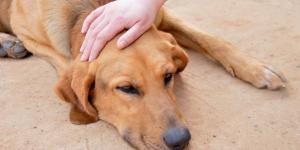
If a female dog has not been spayed, they will enter their estrus cycle. This is also known as going into heat. Various physical and behavioral changes occur during this process. It is necessary for cats to mate and have kittens, but it is something which can be very disruptive in domestic cats. One of...
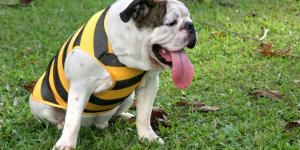
A dog's tongue is a muscle which performs various functions. As with any muscle, it works thanks to exercise. However, some of us may think our dog is exercising their tongue too much. Dogs stick their tongue out for various reasons and it is rarely arbitrary. Much of the time this is normal, especially...

Our dog's vocalizations reveal a lot about their well-being, but they are not always easy to interpret. For example, a loud bark can be an expression of joy as much as it can be an expression of fear. Changes in vocalizations don't always signify an emotional response. When we hear our dog coughing, we should...
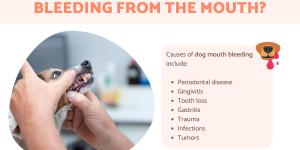
When we see blood coming from our dog's mouth, it is understandable we fear for their well-being. Blood around a dog's mouth may be due to oral health problems, but we also need to consider the fact the mouth is the beginning of the digestive tract. It is possible the blood is from the gastrointestinal...

Breed standards are created to provide descriptions of an ideal example of a given dog breed. These break down the dog's physical characteristics into various criteria, including their ear size and shape. For the Chihuahua, the generally accepted breed standard (there are some variations) states the ears...

There are various internal diseases of dogs which can affect organs and tissues of their body. Some of these are medullary, meaning they affect the internal regions of these internal organs and tissues. Bone marrow aplasia is one such disease, affecting the marrow within their bones. The problem is related...

Some of us don't think it is possible for our dog to be sad. While they may get tired sometimes, their enthusiasm and gifts of affection seem endless. This means when they do seem to be down, it can be worrying. Not only can a dog be sad due to emotional stress, physical problems can also lead to a dog...

There is a misconception that it is OK for a dog to smell bad. Of course, their lifestyle means they will exude certain scents and there is a natural odor to a healthy dog which can be a little musky. However, the worse a dog smells, the worse their health is likely to be. The reason for a dog smelling...

It is all too easy to ascribe human traits and characteristics to our dogs. Not only do they become a member of the family, but the love they reciprocate is real and evidenced in their behaviors. We can see a similar love when a mother dog gives birth to her puppies. She will care for them and ensure...

It is common for a dog to make gulping noises when eating, especially if they are large. While it will differ according to individual, the domestic canine is known for their voracity. Many of us need to temper this by providing smaller portions or even using special feeders to slow their food consumption. Sometimes...

When we adopt a purebred puppy, we can have some idea of what they will look like as an adult. With mixed-breed dogs, their fully developed form can be a little trickier to determine. Part of the joy of adopting a young dog is experiencing what type of animal they will grow up to be. Regardless if they...

When a dog moves their mouth as if they were chewing, grinding their teeth or chattering, one possible cause is bruxism. Also known as teeth grinding, bruxism is a clinical sign which arises from various causes. The result is often your dog making weird movements with their mouth. This can be very disconcerting,...

There are many different health issues which can result in tremors in a dog's body. Many of these are physical, often the result of trauma or age. Some are congenital, meaning they have a genetic predisposition toward certain symptoms. One cause which may dog guardians often overlook is a neurological...

If a dog has a lump near their anus, it can be due to various causes. Growths such as tumors are a possible factor, with perianal adenoma being a common issue. It is important to determine whether the dog has a problem with the anus itself, the anal glands or some other part of the perianal area. Doing...

Rickets in dogs is a bone condition triggered by a deficit or alteration in the levels of vitamin D, calcium or phosphorus in our dogs. This skeletal disorder is characterized by a loss of strength or a change in the aspect and consistency of the bones. If left untreated, the result is often deformities...
